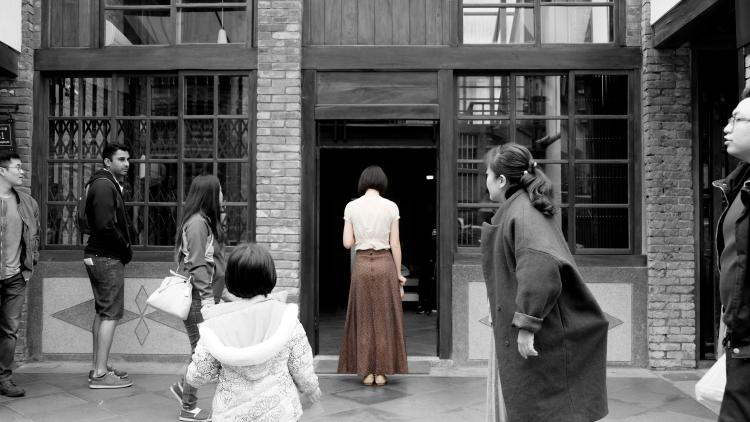Futuru Tsai Series "From New Guinea to Taipei", "Wings for Takasago Giyutai", "Lives and Deaths between Ebbs and Flows"

Key information
- Date
- to
- Venue
- Virtual Event
About this event
*As part of the 2022 Taiwan Indigenous Documentaries Festival, we kindly ask that you register to view this film through Eventbrite .
Please Note: Once you registered via Eventbrite, we would send out the codes and links for the same director's screenings to your registered email address prior to the screening time, and you should receive all three individuals screenings information then.
**Registration closes 9AM BST Monday 1st July. Links to view these films will be sent out at 9:59AM BST Monday 1st July.
Synopses
Futuru Tsai Indigenous Documentaries Series (i)
"From New Guinea to Taipei" 從新幾內亞到台北
| 2009 | 80 mins | Taiwan |
This documentary tells the stories of the three generations of an indigenous Amis family of 'Atolan 'in Taitung, Taiwan. It begins with the story of Grandpa Ro'eng, who was conscripted as the Takasago Volunteer and dispatched to New Guinea to fight under Japanese rule from 1943 to 1945. Sixty-six years later, the son and grandson set out for Papua New Guinea and returned to Grandpa's battlefield. They saw not only the cruelty of the War on the battlefield but also had a novel experience of contacting different cultures.
Grandpa was brought to New Guinea to fight by the Japanese to fight. He had luck, wisdom, and courage to survive the War. In the 1960s, many Amis men also boarded fishing boats to go far-sea fishing worldwide, leaving their hometowns. Nowadays, many young people in 'Atolan have also left their home village and struggle to survive on the "urban battlefield." Currently, 'Atolan faces many large-scale tourism projects by the state government or consortium. 'Atolan has become another battlefield. Can we survive this cruel War just like Grandpa's wisdom back then?
Futuru Tsai Indigenous Documentaries Series (ii)
"Wings for Takasago Giyutai" 高砂的翅膀
| 2016 | 65 mins | Taiwan |
This is a story about the descendants of Takasago Giyutai (Taiwan Indigenous volunteer units during the Pacific War) went back to the battle field of the Pacific War in Papua New Guinea following the footsteps of their grandfathers, and made a monument based on a legend of ‘Amis people who believe the soul would return home by taking the wings of a certain kind of bird. The monument was build up at the Mission Hill in Wewak, where was a Japanese naval base during the War, there are two monuments, one of them was set up by the Japanese in 1969 and the other one was build up by the Australians afterwards. A monument is not only a way to memory the history, but also a cultural representation on the spiritual world, questioning that “do you believe the soul really have returned home by taking the wings?”
Futuru Tsai Indigenous Documentaries Series (iii)
"Lives and Deaths between Ebbs and Flows" 返潮彼彼時的生與死
| 2019 | 13 mins | Taiwan |
The Amis people of the coastal areas have maintained a tightly knitted relationship with the ocean, and this co-existence helps both humans and the ocean to mutually define each other. An intertidal zone is such a place where the Amis people interact with the ocean. Between the ebb and flow of the tides, there is Masia’c, an Amis word used specifically to describe a tidal phase without any equivalent Chinese translation; when the rising tide has reached its fullness and is about to retreat, schools of fish searching for food in the intertidal zone begin to panic, comes the best time for the Amis people to cast the net and catch the fish. Fish risks its life in the intertidal zone for survival, just like the Amis people gamble on their survival, casting the net with high hopes and expectations. In the end, either the fish dies or the humans survive. Masia’c is basically a gigantic marine casino interwoven with various forms of life and death, opportunities and luck, excitement and losses. As the villages located in the peripheral regions of the dominating society, the relationship between the villages and major cities is similar to the intertidal zones and the ocean. Just like some Amis people who dwell in the sea of the urban areas return to the intertidal zone in villages during specific seasons to take up cultural nutrients, when their time is up, they must leave the village and return to the sea of the urban areas. Indeed, some youngsters may be captured by cultural traps and stay, however, will these youngsters who came to the intertidal zone and stayed make it or will they gradually die out?
Director Futuru Tsai 蔡政良
Futuru C.L. Tsai is an associate professor of Ph.D. Program in Austronesian Studies at National Taitung University in Taiwan. He received his Ph.D. in Anthropology in 2010 from National Tsing Hua University and has researched Indigenous Taiwanese arts, culture, and history. He is the author of The Anthropologist Germinating from the Rock Piles (石堆中發芽的人類學家) (2009) and From Dulan to New Guinea (從都蘭到新幾內亞) (2011). He is also an ethnographic filmmaker whose work includes Amis Hip Hop (2005), From New Guinea to Taipei (2009), The New Flood (2010), Wings for Takasago Giyutai (2017), and Lives and Deaths between Ebbs and Flows (2019). His recent research interests are Amis maritime culture and the influences of regional revitalization policy on Amis People and making an ethnographic film entitled "Breathing Between."
Organiser: Centre of Taiwan Studies
Contact email: hl55@soas.ac.uk
Sponsor: Taiwan Docs
